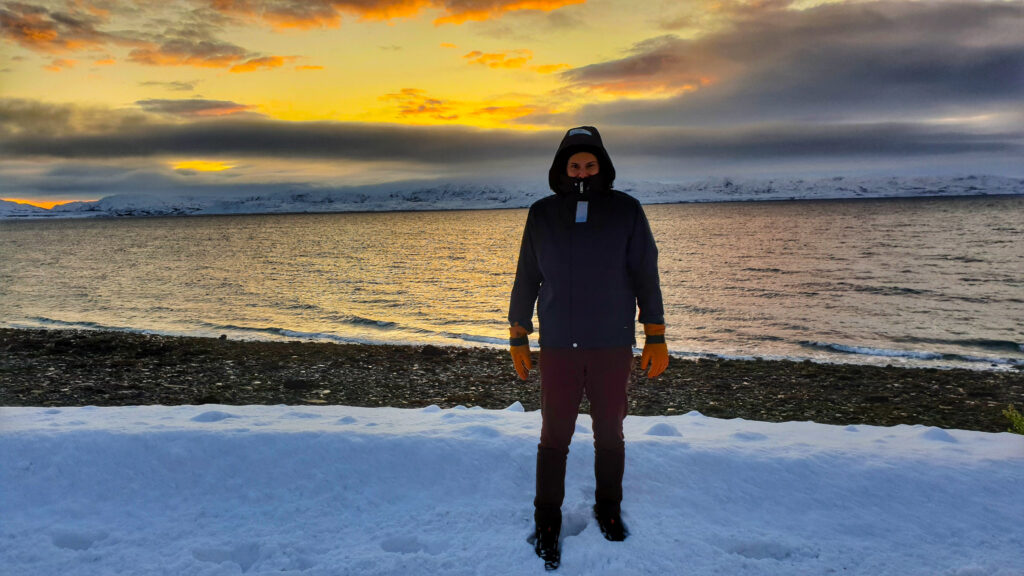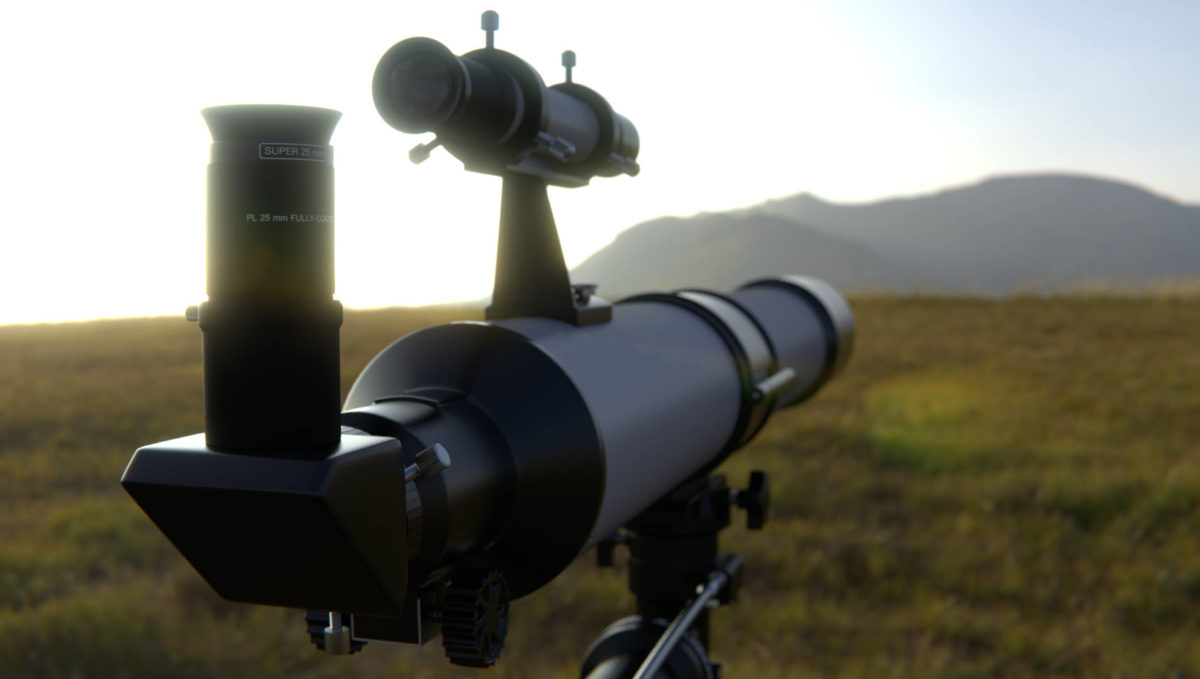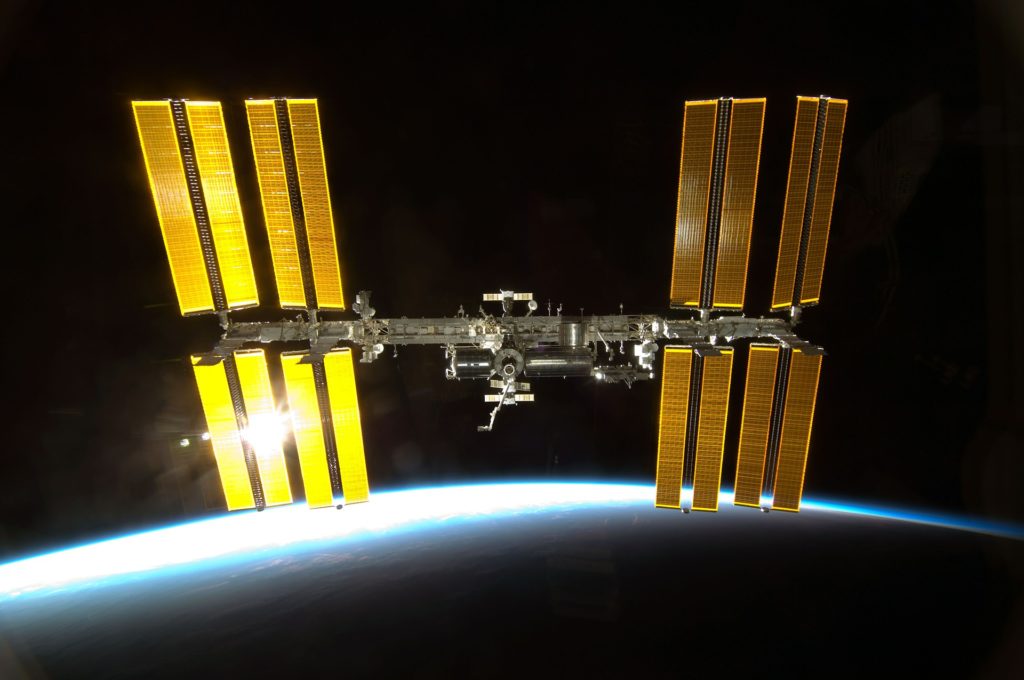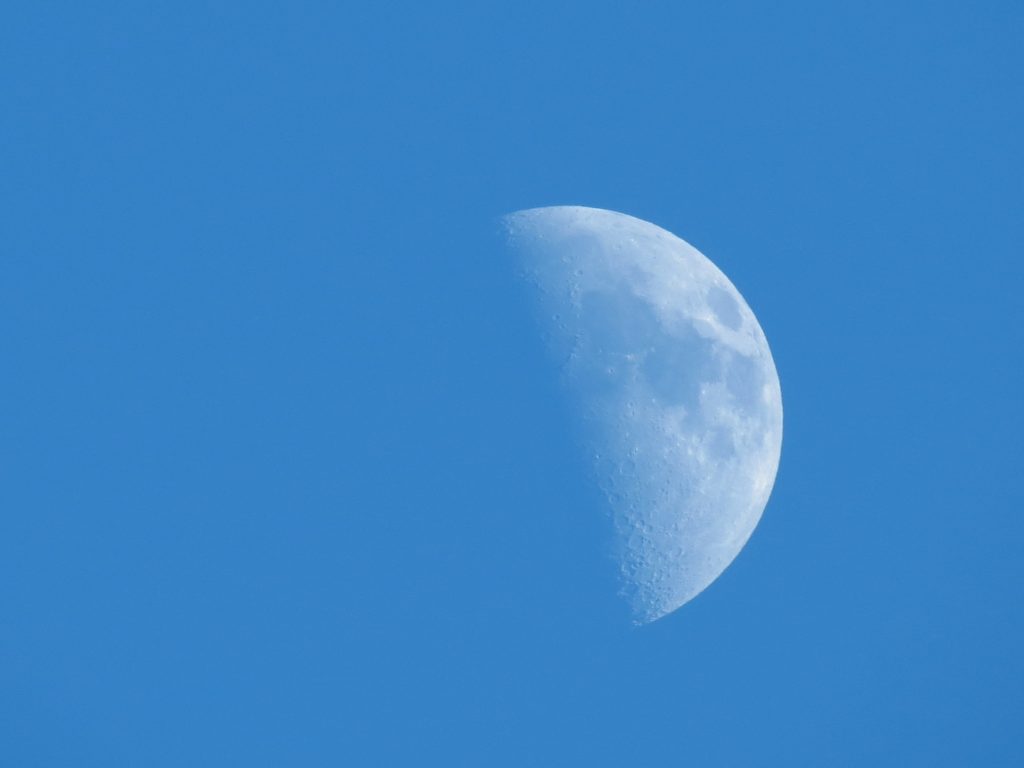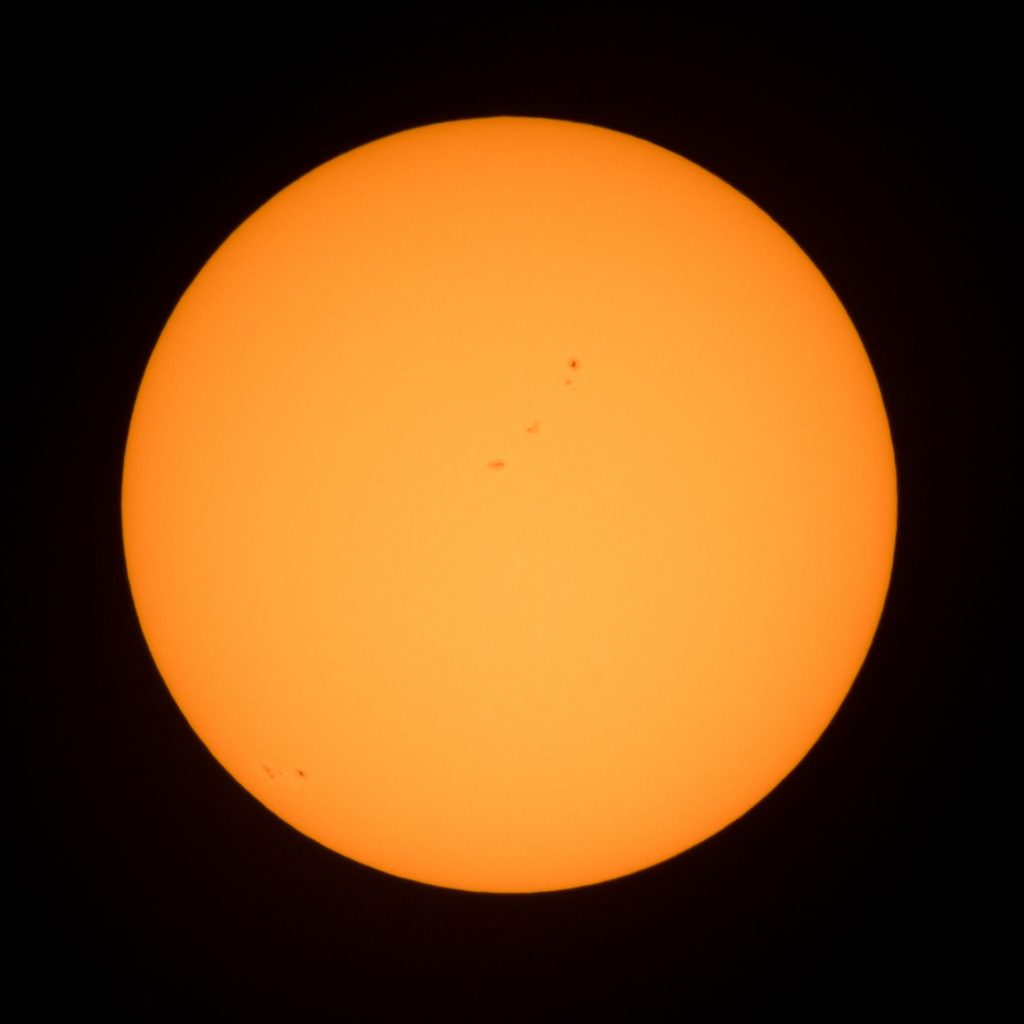This period in Vadsø, as in much of the Arctic region, nights begin getting longer and longer. It’s not yet the Polar Night, which means that everyday, beautiful sunsets and sunrises mark the beginning and the end of the dark, cold Arctic nights. But what makes sunsets so beautiful? Why does the sky and the Sun turn red?
In order to answer this, we need to review the same concepts we took into account when answering the question “why is the sky blue?“.
Light is an electromagnetic wave, just like radio waves, microwaves, and even the radiation resulted from radioactivity! The only difference between all these different electromagnetic waves is their wavelength.
Even the light that we actually perceive with our own eyes is made up of multiple wavelengths. And to each and all of these wavelengths of light corresponds a different colour! So, the light that comes to us from the Sun and which we see, is made up of multiple colours! Of all colours, to be exact!
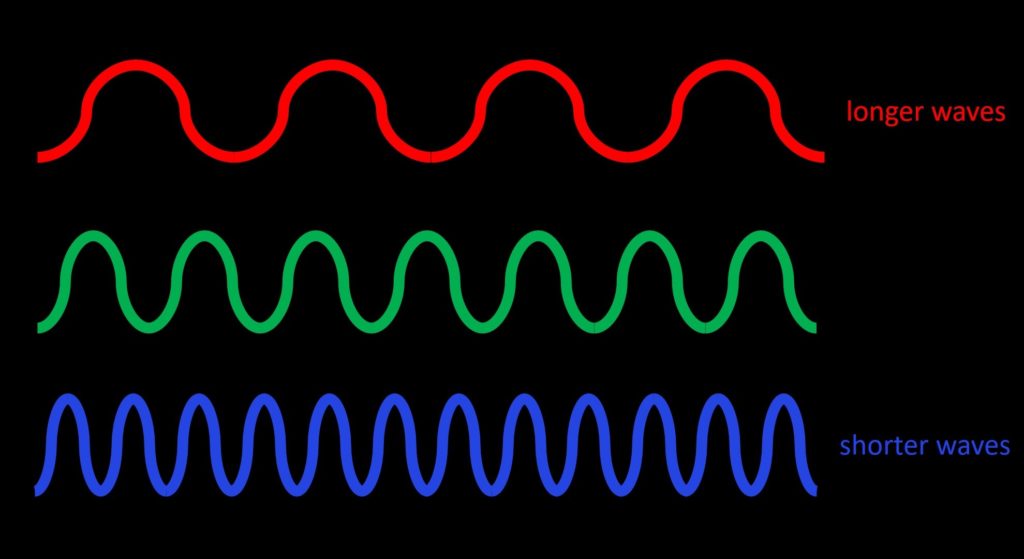
Just like an ocean’s waves, light travels the same way: in waves! Blue light travels in shorter waves (with a shorter wavelength) and red light travels in longer waves (longer wavelengths).
When the sunlight, with all its colours, reaches Earth, it meets the planet’s atmosphere! Thus, it starts interacting with various particles in the air, such as tiny ice crystals, dust, water droplets and even gas molecules that make up the air itself! And once the light waves interact with these particles, it gets scattered!
For a wave to interact with a particle, the two must be of the same order of size. Smaller particles scatter short wavelength light (blue) stronger. Small air molecules, which make up the entire atmosphere, scatter the blue component of sunlight the most, and in all directions, because of its short wavelength! And this is why, during a sunny day, everywhere you look, the sky is blue!
At sunrise and sunsets however, the Sun, relative to us, finds itself at low positions in the sky. From these low positions in the sky, sunlight needs to travel longer distances, through thicker amounts of the atmosphere in order to reach our eyes.
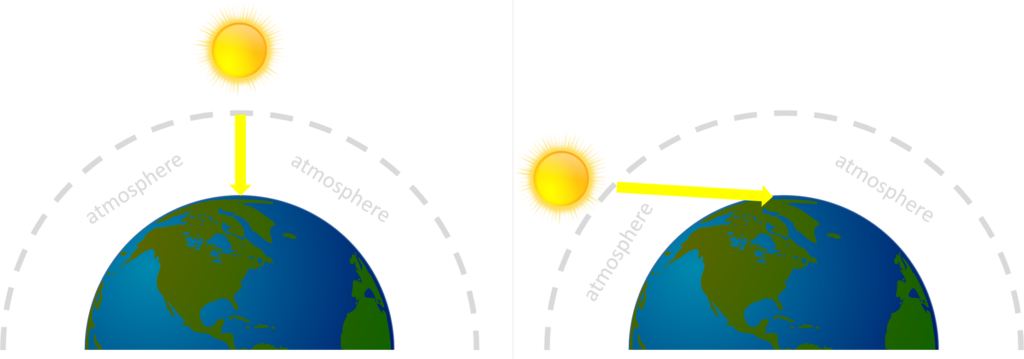
Because of this, the light gets scattered more strongly by the atmosphere. Blue light, which gets scattered easiest, is in fact scattered so much, that it is mostly removed before it actually reaches our eyes. Which in turn means that there is more red light (which gets scattered the least) left for our eyes to see.
